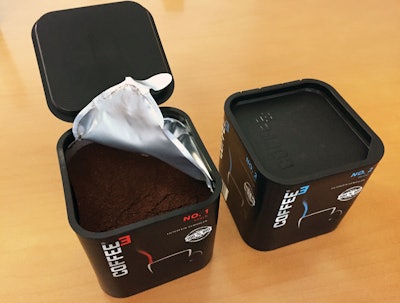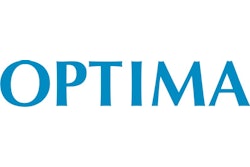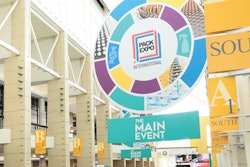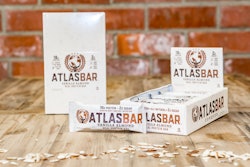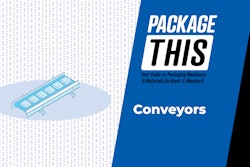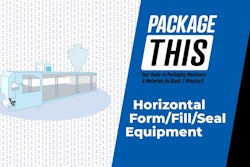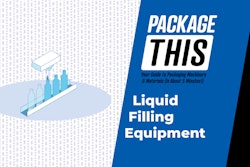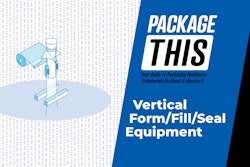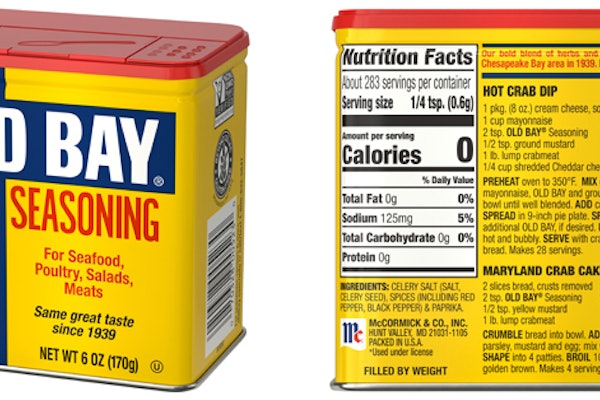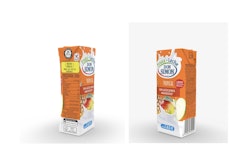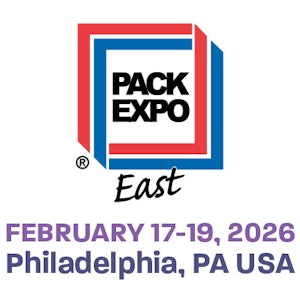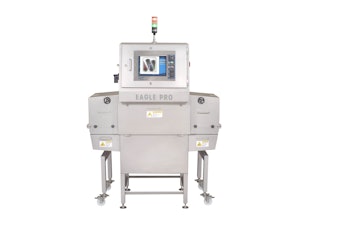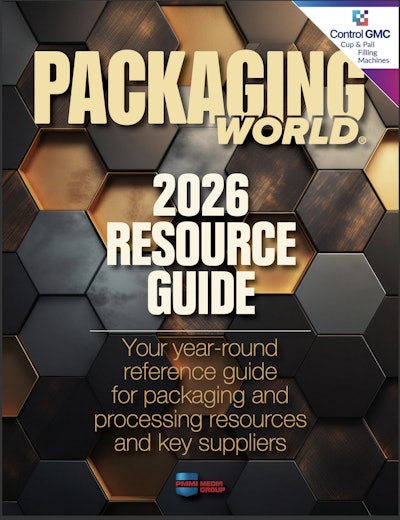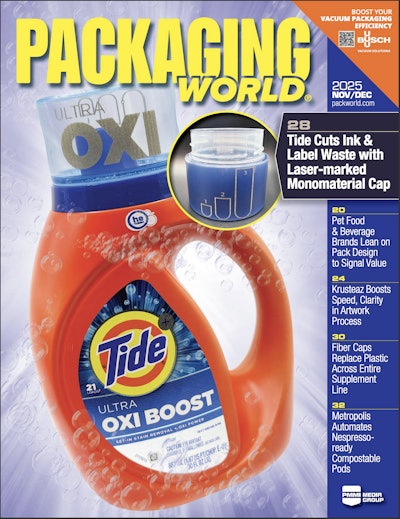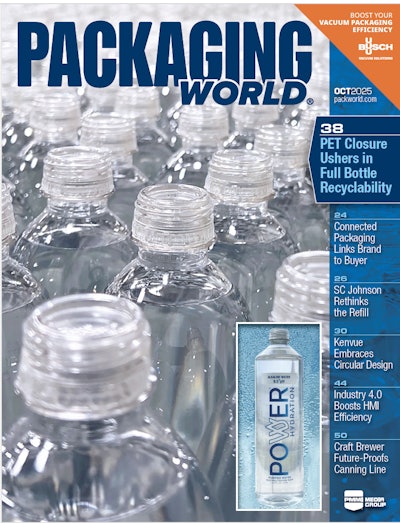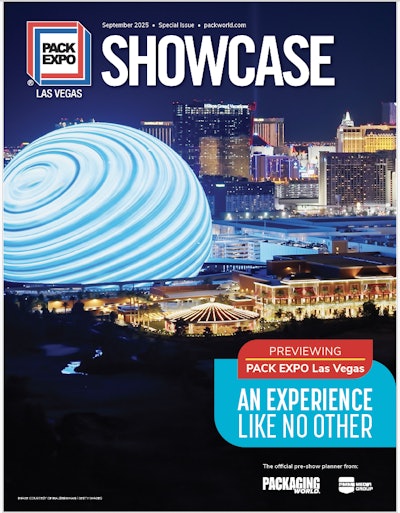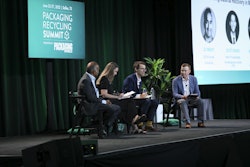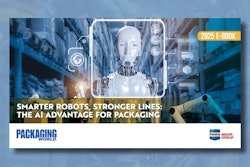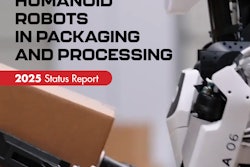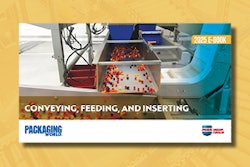NewCoffee GmbH & Co., a subsidiary of Aldi Sud, is the first coffee producer to commercialize the InLine Can, a new approach to coffee packaging that was among the winners of a 2018 German Packaging Award in the competition sponsored by the German Packaging Institute. Though suitable for either ground or whole bean coffees, NewCoffee’s use of the InLine Can at this point is focused on ground coffee at its production facility in Ketsch, Germany.
Developed jointly by Optima and Hörauf—with considerable input from NewCoffee—this paper and aluminum Coffee3 cube is cube-shaped when it reaches consumers. But forming and filling are done inline. Containers are formed from rollstock on specialized equipment from Hörauf and transferred directly to an Optima CFS filling and closing system. Filling includes:
• volumetric filling plus gas flushing with nitrogen
• induction sealing of a film lamination that includes aluminum barrier
• the application of an injection-molded hinged overcap
The aroma and freshness of the coffee are protected by the nitrogen gas blanket and the gas- and moisture-proof packaging. For a video illustrating can-making and filling, go here: pwgo.to/5036.
The value proposition of this new format is best understood by comparing it to the two formats currently most popular in Germany and much of Western Europe: prefabricated cans and vacuum-packaged brick-style bags.
The chief downside to the prefabricated can is a matter of logistics, shipping costs, and warehouse space. For starters, 30,000 InLine Cans can be made from two rolls of material that occupy about the same amount of space occupied by a mere 1,000 pre-fabricated cans. Not to mention that with the InLine Can you do away with handling of pallets full of cans, which always presents a risk of damage. Plus, there’s no need to depalletize incoming cans.
These handling and logistics issues that come with prefabricated cans are not a problem with vacuum packaging because, like InLine Can packaging, it relies on rollstock. What’s suboptimal about vacuum packs is that once they’re opened, the contents must be decanted into another container. The InLine Can with its hinged lid, on the other hand, is a perfectly suitable, reclosable, convenient container until the last of the coffee is used up. The other advantage of the InLine Can over vacuum packaging is that the coffee manufacturer using the InLine Can does not lose brand identity once the container is opened.
“It took several years of intense teamwork with Optima from the first idea to the launch of the new product,” says Michael Körnig, Managing Director of NewCoffee. The cost of the InLine Can compared to the two more conventional package formats was not available. As for the speed of the InLine Can operation, Optima says it’s rated at up to 150 containers/min.
How it all comes together
Step one in the coffee packaging operation is, of course, making the can on the Horau Model CFM-300. Into this machine are fed two rolls of material, one for the body of the container and the other for the bottom. Both are supplied by Stora Enso.
The body material is a lamination of LDPE/aluminum foil/LDPE/paper/printing/UV-cured coating. The paper layer, which represents the bulk of the container in terms of top-load strength, has a thickness of about 400 micrometers. This paper layer gets printed in six colors on an offset press and is given its UV-cured coating after the lamination process.
This body material is fed from its roll into tooling that cuts out individual blanks, each of which becomes a container body. A transfer belt takes the blanks onto one of eight forming mandrels. On each mandrel a blank is formed into its cube shape and a side seam is produced by way of heat and pressure. Also, a strip of polyethylene tape is applied over the inside seam so that no paper is exposed to the coffee product. Cube-shaped cups slide off of the mandrel and proceed directly into the Optima CFS system. A look at Figure 1 (shown) provides a good idea of how the Optima CFS system operates.
Cans are picked four at a time and placed into pucks. The cans proceed four-across into a filling station where an auger filler dispenses coffee volumetrically. Before filling, the tare weight (weight of the empty container) is recorded by a checkweigher. After filling, the container’s gross weight is measured. In this way, the filling weight can be accurately adjusted if the coffee has some density variations.
Filled containers then proceed to the station where the lidding membrane is applied. This material is fed from a roll in a direction perpendicular to the direction in which the cans are moving. Four individual membranes are punched out and then each is induction sealed to a container top. The matrix from which the membranes are punched proceeds to a stand where it is wound up into a roll.
Meanwhile, the injection-molded overcaps are fed in from an elevator mounted alongside the main system. Like the lidding membrane, the caps are fed in from a right angle. A pick-and-place device places four caps at a time onto four cans, which then go through an induction sealing system that affixes cap to can. Then a pick-and-place station picks four cans out of their pucks and places them on an outfeed conveyor. The pucks are conveyed back in the direction of the empty can infeed and go through the loop again.
Downstream from the Optima system, the cube-shaped containers are automatically tray-packed eight per tray and then proceed through automated robotic palletizing, stretch wrapping, and high-rack storage.
